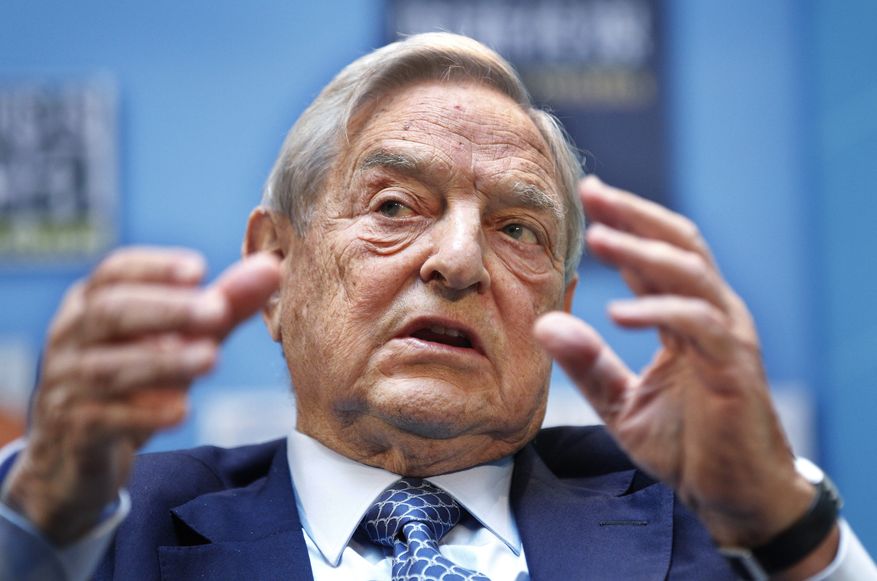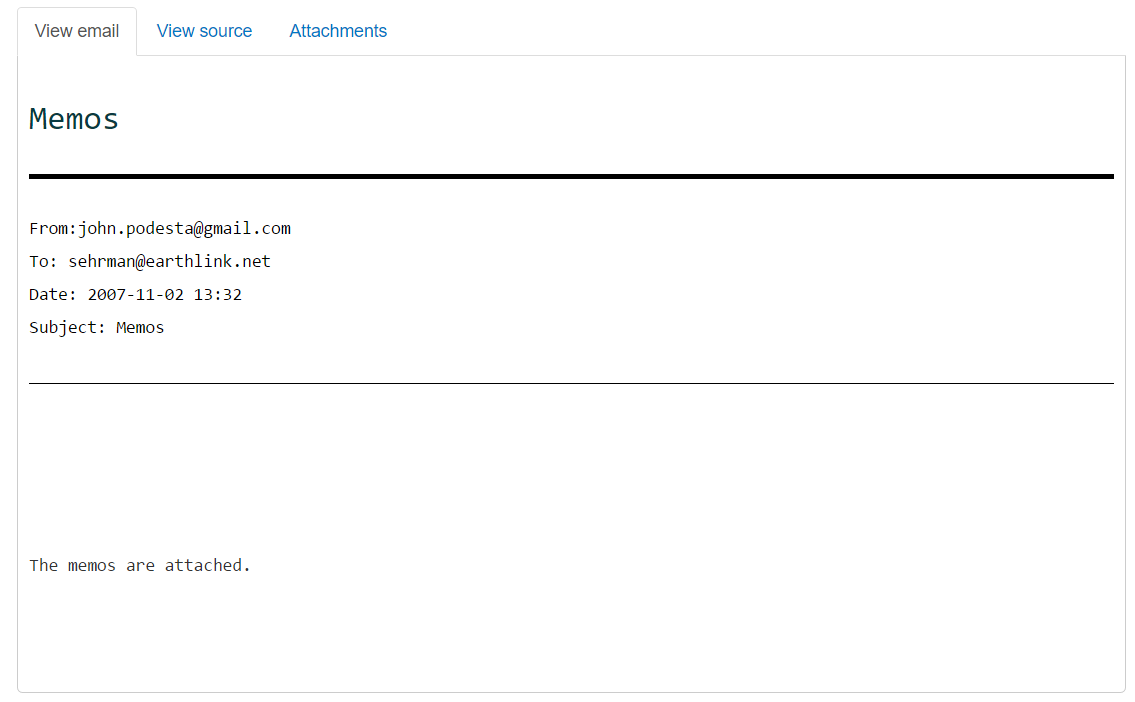Wikileaks Email ID 59125 exposes John Podesta and George Soros Master Plan on how to take over America in 2008 and beyond!
It’s all there in the memos, the whole scheme… taking over the economy, protracted war, dividing Americans and controlling the media.
Email link: https://wikileaks.org/podesta-emails/emailid/59125
Email Attachments:
2008 Combined Fundraising, Message and Mobilization Plan.doc
NYC meeting 2007 (Final Draft).doc
From 2008 Combined Fundraising, Message and Mobilization Plan.doc:
Memo To: George and Jonathan Soros, Peter and Jonathan Lewis, Herb and Marion Sandler, Steve Bing, John Sperling, Michael Vachon From:John Podesta (writing as a private citizen) cc: Anna Burger, Rob McKay and Tom Matzzie Date:October 30, 2007 RE: 2008 COMBINED FUNDRAISING, MESSAGING AND MOBILIZATION PLAN
This memo serves as the follow-up to our September meeting in New York. Coming out of this meeting, I was charged with putting together a more detailed and structured overview of what the combined messaging and voter mobilization elements of an independent expenditure would like in 2008.
Since then, I have met closely with Anna Burger, Rob McKay, Tom Matzzie, Susan McCue, Martin Frost, Stan Greenberg, Paul Begala and others to discuss these questions and flesh out a concrete plan for action in 2008. Tom Matzzie has produced a comprehensive campaign plan and institutional framework for the messaging effort and this memo will draw upon many of his ideas. This planning is on top of the existing work already under way by the America Votes-Catalist-Atlas network on the mobilization side.
I am confident that collectively we have produced a viable and successful model for achieving victory in 2008 (and beyond) built on transparency and full accountability for everyone involved.To win in 2008 we will need to mount two large campaigns. The first will use national, state and local media to define the issues and narratives that will ultimately shape the election—a progressive “Messaging Campaign.” The second will be a voter contact and mobilization effort in targeted states to move swing voters and mobilize progressive voters—a progressive “Mobilization Campaign.” A successful joint strategy must be developed and executed to connect the messaging component to the ground game.
We suggest that you keep in mind the following strategic goals as we try to develop a framework for electoral activity in 2008:
Create the conditions for a tidal wave against the GOP. The stakes of the election need to fit the historical moment. The country is massively off track. Nothing will change until Bush and his supporters are out and new leaders are in—leaders who will be willing and able to do what is necessary for the country. A likely downturn in the economy, the protracted war in Iraq, rising inequality and Republican resistance to change can help set the stage for widespread gains up and down the ballot in 2008. This must again be a nationalized election in terms of scope and message.
Keep the President’s numbers down and brand all conservative candidates as “Bush Republicans.” Bush’s lame duck status cannot be allowed to create space for the Republicans to claim the mantle of change or conservative principle. The Republican presidential candidate will attempt to be the true heir of Ronald Reagan and may try to position himself as an agent for change, Sarkozy-style. We must continually remind voters that the nominee and all the rest of the Republican candidates are the residual forces of the failed Bush years.
Exploit the particular weaknesses of the Republican presidential nominee. Beyond tying the candidate to Bush, we must not be shy about reminding voters of the personal faults and character limitations of the Republican Party leader. The current crop of candidates is relatively unknown to Americans and will be ripe for definition through serious opposition research and media work. This will not happen organically. It will require sustained pressure and a willingness to play politics by their rules.
Ensure that demographics is destiny. An “emerging progressive majority” is a realistic possibility in terms of demographic and voting patterns. But it is incomplete in terms of organizing and political work. Women, communities of color, and highly educated professionals are core parts of the progressive coalition. Nationally, and in key battleground states, their influence is growing. Latinos and young voters are quickly solidifying in this coalition as well. But many of these voters are new to the process. All of these groups—in addition to working class voters and independents picked up in 2006—will require significant long-term engagement in order to keep them reliably on our side.
Control the political discourse. So much effort over the past few years has been focused on better coordinating, strengthening, and developing progressive institutions and leaders. Now that this enhanced infrastructure is in place—grassroots organizing; multi-issue advocacy groups; think tanks; youth outreach; faith communities; micro-targeting outfits; the netroots and blogosphere— we need to better utilize these networks to drive the content of politics through a strong “echo chamber” and message delivery system.
Set the stage for future progressive actions. All of this electoral activity will be for naught if we do not simultaneously advance a larger vision for why progressive change is necessary and how specific progressive legislation will achieve these goals. Should progressives win in 2008, the next president and Congress will face serious challenges in both cleaning up the mess of the Bush years and moving significant reforms in health care, energy, foreign policy and Iraq, poverty and mobility.
Leave something behind. We should think of investments in 2008 as building blocks for ongoing strategic campaigns and issue work in 2009 and beyond. Simply getting progressives elected will not be enough to maintain the political pressure and support necessary to pass progressive legislation and build a long-term, working majority.
Given the existing work on the voter mobilization side, primarily through the enhanced American Votes-Catalist-Atlas network and ongoing union efforts, most of our discussion in the New York meeting centered on the messaging side. The primary questions raised were: “What is the scope of the messaging campaign?” and “Who is going to run it?”In this memo, I want to focus in greater detail on the messaging campaign, describe the mobilization effort again, and provide an overview of the governance and linkage between both efforts plus the joint fundraising through a new 527.
…. EXCERPT …..
The Messaging Campaign
The messaging component will be set-up through an existing 501(c)(4), currently named The Campaign to Defend America. This name will be changed when appropriate.
A (c)(4) board, with overlapping but not identical members from the other boards, will control the messaging component. Assuming resolution of some outstanding legal questions, I am prepared to serve as Chairman of the Board for the (c)(4) so long as I can continue to lead CAP/Action Fund. The messaging effort itself will be led by a President with full executive authority along with an executive team of three key individuals described below.
…. EXCERPT …..
• Developing a “Media Nerve Center” to align messaging across TV, radio, print, Internet, single-issue and advocacy organizations, progressive media, surrogates and new media. This “Media Nerve Center” would be connected to the Mobilization Campaign and eventually become a part of the permanent progressive infrastructure to last beyond the 2008 election.
…. EXCERPT …..
NYC meeting 2007
Controlling the Dialogue, Messaging and Media
If the structure of voter contact/voter mobilization is relatively mature, the structure of using outside forces to control the messaging and the debate in the campaign is almost nonexistent.
Ever since the 1996 Clinton campaign discovered the soft money loophole in the campaign finance law to run “issue ads” that pummeled Bob Dole before he even got the nomination, national and local television campaigns have been waged using non-federal dollars. The McCain-Feingold law closed down the loophole Clinton used to run that advertising through the DNC, but a new avenue for soft dollars to be spent on advertising quickly was found through spending by so-called 527 organizations. The FEC was in the process of narrowing this new loophole when the Supreme Court, this June, blew a hole in the McCain-Feingold laws to permit 527’s, unions, corporations, trade associations and others to run “issue ads” right up until Election Day.
The Media Fund in 2004 was built on this theory of soft money advertising and the notion that the candidate would be without resources from the spring through the convention.**
sehrman@earthlink is the original recipient of the memo; much speculation is in play over the identity of this poster – who only appears once in all the Wikileaks files – but this may in fact be a rare sighting of the elusive DC Power Maven and Hillary’s Mentor, SARA EHRMAN…
Sara currently serves as a Senior Advisor to the S. Daniel Abraham Center for Middle East Peace. Sara’s extensive career has provided her with a dynamic and unique knowledge of the regional issues in the Middle East.
Sara has held several key positions over the years, including Legislative Assistant to two U.S. Senators, Co-Director on the McGovern Presidential Campaign, Director of Federal Affairs for the Governor of Puerto Rico, Political Director for the American Israel Public Committee, Founder/Director of the Texas/Israel Exchange, Deputy Political Director for Clinton for President and a member of the Clinton/Gore Transition team, and Deputy Political Director of the Democratic National Committee.
This was a good strategy on their part. Unfortunately, their nominee was Hillary Clinton, the most corrupt politician possibly of all time, and the Republican nominee was Donald Trump, who is not actually a politician, is not actually a Republican, and cannot be accused of being in concert with the Bush doctrine.


Sorry, the comment form is closed at this time.